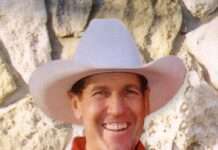Next week local students in Kansas will be free to enroll in schools beyond their home district. In urban counties, the change tempts visions of land rush fever, parents hustling their offspring into the wagon at daybreak to new schools before they are filled, enrollments closed, chance lost. In the rural regions, unlikely.
The state’s open enrollment law, passed two years ago, is effective June 1. Kansas students may attend schools outside their own school district as long as space is available. (Students have long been allowed to attend school outside their district of residence, but with school board permission.)
The notion of open enrollment surfaced years ago but was recently brushed off in the early 2020s as legislators squabbled over new ways to increase their control of local schools.
There were repeated thrusts toward consolidation of rural districts with the thinnest enrollments (under 100). This notion lost steam at the prospect of children alone at isolated country crossroads, facing even longer bus rides.
The focus turned to money and a legislative obsession with vouchers, a shell game to sluice public funds into private schools. This grew to the notion of scholarships (state aid) for students attending private schools, including those affiliated with religious orders. This escalated with quarrels over “woke” subjects in curricula, dirty books in classrooms and libraries, greater scrutiny of class material and crusades to give parents more clout over what subjects are taught.
These simmering debates mostly involved, by implication, crowded districts in the state’s urban northeast and Sedgwick County in south central Kansas.
* Up popped Senate Bill 339, passed by wide margins in the House and Senate. Next year students will be counted for per-pupil aid to the district in which they are schooled, not where they live. This seems redundant because “border districts” in the rural west and southeast have long been allowed to enroll nearby students from border states ‒ and vice-versa ‒ and count them for aid.
In reality, the new law is tuned to urban counties where districts (and borders) are tightly packed.
Consider Sedgwick County, its ten districts and 74,650 students. Enrollments range from 800 (Cheney USD 268) to Wichita 259 with the state’s largest enrollment, 44,247.
Northeast metro counties include Johnson, six districts and a combined enrollment of 92,776; Wyandotte, four districts, 29,193; Shawnee, five districts, 26,081; and Douglas, three districts, 12,940.
These five counties contain ten percent of the state’s 286 school districts and 52 percent of statewide public school enrollment (457,123). This is where the students are, a prime focus of Senate Bill 339.
In Sedgwick County, students or parents in Clearwater USD 264 (enrollment 1,109) or Derby 260 (6,872) may want to hopscotch into Butler County and enroll in Andover (enrollment, 5,618) ‒ or vice-versa.
Academics and sports can be fierce and attractive variables among neighboring schools. The new law may stimulate recruiting of star talent ‒ all within the rules, of course. In Johnson County, rivalries simmer among the schools in Shawnee Mission (26,047), Olathe (28,162) and Blue Valley (21,823).
At the same time, each student, star or otherwise, is worth roughly $6,000 in
base state aid and $2,000 or more in supplemental funding.
*
Interest can vary among mostly rural districts in the other 100 counties. For example, some students who live in Emporia 253 (4,211 enrolled) already attend school nine miles south in Olpe (South Lyon County USD 252, enrollment 509), known for its high academics and championship sports programs.
Seventy percent of Kansas school districts (198) have enrollments under 1,000; of those, 136 are less than 500. Nine districts, eight in the west and one southeast, have enrollments under 100. Most of these schools are in the open rural spaces, distant towns and cities. The bus routes are long and broad.
On the western High Plains, land of the lonely wait, freedom to hopscotch schools seems an odd notion, only to swap today’s long ride for tomorrow’s.





